Having to recharge your Lipo batteries individually in order to power your drone can be such a tedious approach because you might have to wait for many hours before they are all full. Imagine having 6 empty batteries, where each takes an hour to be full. It means you will have to spend about 6 hours before using them. That’s intolerable.
With parallel charging, on the other hand, you can alternatively charge many batteries at the same time, thus saving time more effectively. You will surely be ready at an hour’s time with up to 6 batteries that are charged at the same time. That’s the wonders of parallel charging compared to series charging.

We probably are narrating parallel charging in a foreign language to a beginner now. Read through the article to get a glimpse of what we refer to when we talk about parallel charging. We have compiled all that you have to know to get started. Let’s first start with the importance below.
Importance of Parallel Charging
You probably know the first importance as saving you time and charging the batteries effectively. This helps you fly your drone in no time without having to wait many hours due to series charging or 6 batteries individually.
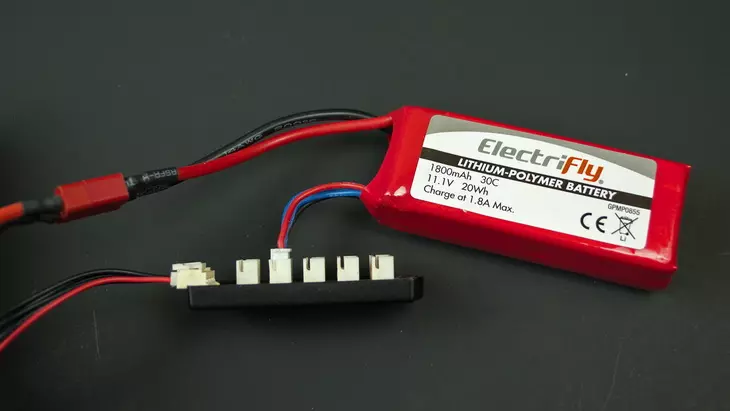
The other importance is that, parallel charging helps in reducing the internal resistance of individual batteries connected together. If you were to charge individually, for example, your charger will need more power to charge all the batteries. So, according to Ohm’s law, which states that the electric current is inversely proportional to the resistance and directly proportional to voltage, the total resistance will be halved when these batteries are all connected in parallel.
How does parallel charging works?
In order to master Lipo battery parallel charging, you have to understand how it works first. The first note is that, when the batteries are all connected to the parallel charging board, they will be balanced and then charged. If there’s any voltage difference, for example, it will be stabilized before the charging proceeds.
The main aim is for the voltage to be the same. This stabilization of the voltage will be done by the surge of a current flow to all the battery packs the result of which will be a single, large battery. Say you are about to charge 4 1500mAh batteries, the overall capacity for parallel charging will be 6000mAh. It is then easy to charge a single, larger pack than individual batteries.
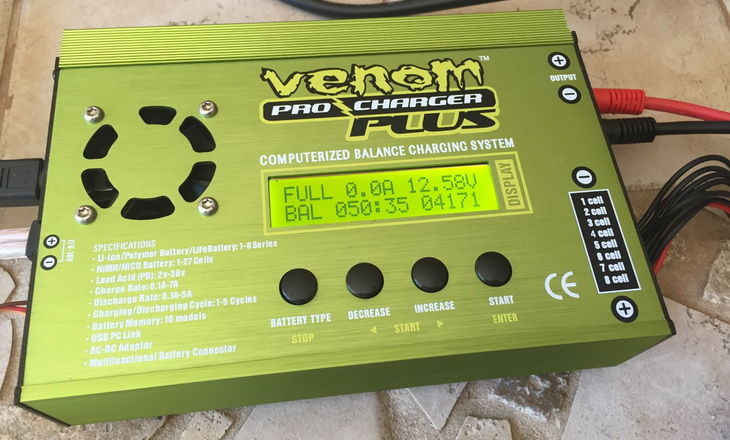
During parallel charging, there will a cell balancing between the batteries. For instance, the cell 1 in the first battery will be connected to the cell 1 in the second battery, etc. The balance leads are used in accomplishing this balance.
That’s how basically this form of charging works on how to charge more than one Lipo battery at a time. Now let’s give you insights on how to safely proceed with this. More importantly, an extensive knowledge is needed to execute this process. If you feel unsure, please ask for an intimate assistance from a qualified technician, or devote more time reading through to get a grasp. Sometimes it takes time to master. Just start with 2 batteries and increase as you advance in knowledge.
How to get started with parallel charging
It is quite an easy process, but, as aforementioned, requires an extensive knowledge of electrical connections such as counting the maximum charge current needed, understanding voltage and the battery types. However, a determined mind can comprehend the guidelines given.
As a result, we will give you an insight in this article that how to go about this process. Firstly, you have to acquaint yourself with the requirements prior to commencement. These include the following:
Requirements for parallel charging
- A wiring adapter for the main leads and for the balance leads (should all have the same number of connections)
- Lipo batteries up to 6 packs
- Lipo battery charger
- A parallel charging board
If you do not have the Lipo batteries already, or think of buying new ones, consider this “best seller”, Venom RC. You can also find the parallel charging boards at affordable prices on Amazon as well as the lipo battery chargers. The other step to take is to make sure that all these components are actually compatible with each other.
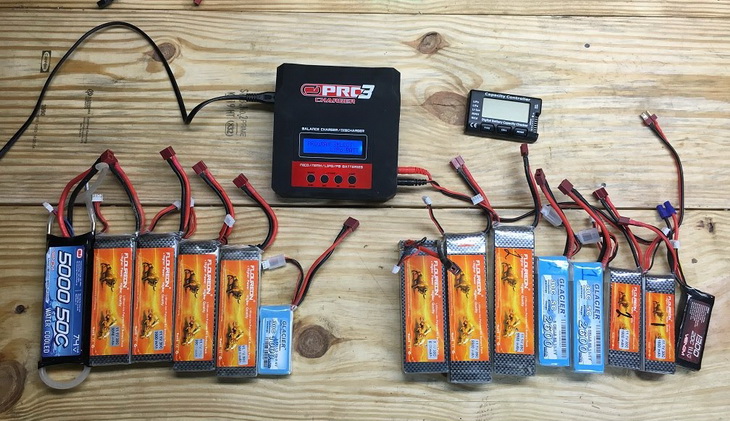
Keep in mind that this form of charging comes with limitations so as to prevent the possibility of burning your charging board or the batteries themselves. Below are some of the warnings that shouldn’t be overlooked to ensure a safer charging. Overlooking the warnings is a one step towards jeopardizing your safety with the possible explosion of the batteries and the charging board.
Warnings for Parallel Charging
- The batteries should all be of the same cell count. For example, you are not allowed to charge 3s with the 4s or with the 2s. 3s should be paired with the 3s Lipo batteries.
- Although it’s not mandatory to ascertain the exact capacity and C-rating, it is recommended that the voltage difference should at least be reasonably small. For example, an 12.4V 800mAh 10C and 12.5V 1000mAh 15C can be charged parallel provided the cell count is identical.
- You should not, for example, pair the half-filled batteries with empty ones because there could be a tremendous current flow that may have adverse end results. That’s why the voltage difference should be reasonably small.

How safe is Parallel Charging?
Parallel charging is a safe way of charging more than one Lipo battery at a time. All you need is to adhere to and comply with the warnings aforementioned to ensure a safe way of charging. Take note of the voltage discharge levels to deter the destructive current flow due to the inequality of the voltage between the batteries.
It can be equally dangerous to use this method if the precautions have been neglected. The first thing to note is that, if anything goes wrong, then all the battery packs shall be affected equally.
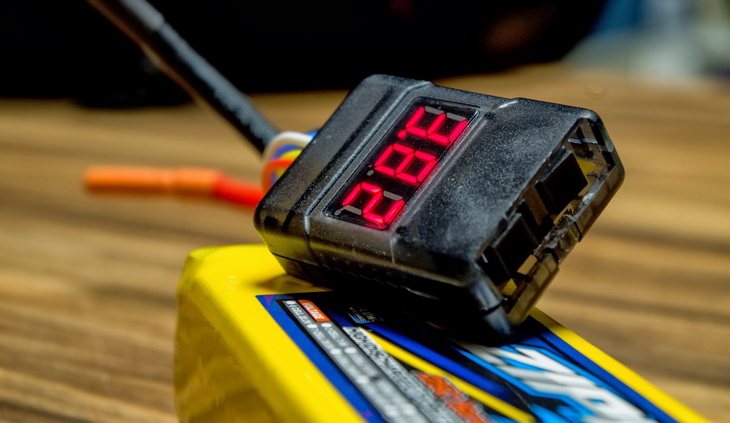
We therefore recommend a further study into understanding electrical connections, or then associate with the technician to perform the connections on your behalf. We recommend watching this video https://www.youtube.com/watch?v=7wj-EB4-71M to get an insight on how to perform parallel charging safely.
How to charge multiple batteries safely on a parallel board?
As you’ve probably understood the warnings and requirements above, you have an idea of what is needed prior to starting. You should get the parallel board, interchangeably called the “para-board”. Usually, these boards come with up to 6 slots for a maximum of 6 batteries. So you can charge any number below that. With the development of technology, more slots over 6 may be unfolded.
But note that charging more batteries require more wiring, and for an amateur hands-on person, it can be challenging. For now let’s base our assumptions on 6 slots and 6 batteries as the maximum.
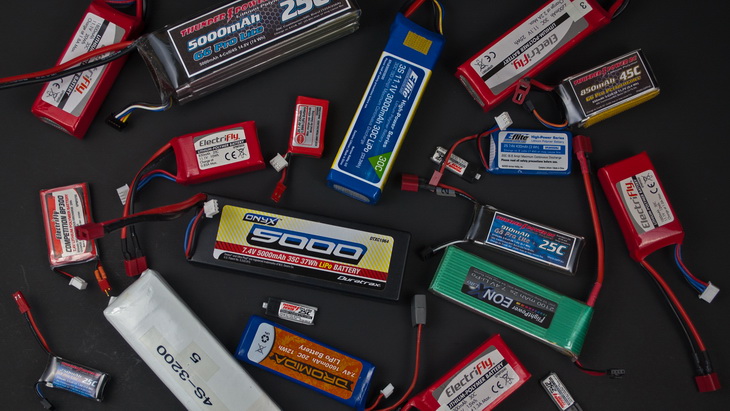
The next thing you need is the main plug “discharge lead’ and the balance plus to be inserted concurrently during parallel charging. Depending on the number of batteries to charge at the same time, we reckon that you put an equal number on either side, well if it’s an even number, and try to keep a distance between them.
Although we’ve never heard of Lipo batteries bursting into flames in parallel charging, you better be prepared and err on the side of caution. Perhaps people have been more cautious enough. Our assumptions signal that it could be the case when charging the batteries while in contact with each other.
When charging, it will be advantageous if you are using smart Lipo chargers that adjust the charging current automatically. If not, then you will have to do some calculations manually and adjust accordingly. Don’t worry, calculating the current is an easy by following a simple, though demanding set of formulas. Let’s discuss this below.
- Calculating the Maximum Charging Current for your Batteries: To start with, it is important to calculate the maximum current allowed by the charger for a safer charging. So using some electrical mathematics, dividing the power by the voltage (I=P/V) can give you the charge current. Let’s assume that we have a Lipo battery charger rated at 50W and we want to charge 4 1500mAh 3s batteries and you want to charge at 1C which can be equivalent to 4.2A total charge current. Meanwhile the voltage of a single battery is 5.6V, so for 4 batteries it will be 22.4V. To calculate the maximum power needed, we multiply the 22.4V by the 4.2A to give us the power of over 94 W, and that is way more than 50 W. This interprets danger to us that the charger can blow up and damage the batteries because of more power needed to charge 4 batteries at 1C. Change the C-rating and then calculate accordingly. To avoid these hassles of calculating manually, get the smart chargers. The charge current of multiple batteries is not the same as when you charge individual batteries. When charging single batteries, for example, a 1500mAh battery would need to be charged at 1.5A and a 2200mAh at 2.2A when charging at 1C. Now consider the sum of the capacities in parallel charging. For instance, 4 1500mAh batteries will total to 6000mAh and can be charged at 6.0A. These are just typical examples. Now let’s leave these calculations aside because they can be confusing if you’ve never done any quantitative module in your school. Nonetheless, it doesn’t mean that you won’t be able to charge more batteries at once. Just follow the basic rules and the maximum allowable power to avoid the destruction.
- Getting Your Hands on the Parallel Charging Board: Now, for the hands-on technicians or enthusiasts, it’s time to get your hands on the job or charging. When starting the process, always connect the main plug “discharge leads” first before the balance leads to avoid the dire consequences particularly when plugging batteries with varying voltage levels. What happens is that, there could be a huge current flow in the para-board in response to the difference in voltage among the Lipo battery packs. And the balance leads are normally thinner so they can be damaged as a result of that the current flow. That’s why it is advisable to plug the discharge leads first as they can withstand that flow. But if you are about to charge the batteries with the exact same voltage, it is not mandatory to start with the discharge leads before the balance leads.
Additional Tips & Recommendations
To err on the side of caution, you need to be more vigilant when conducting this form of charging. Take note of the following tips:
- Get yourself a high power Lipo battery charger and a reliable power supply. This will eliminate the need to calculate the max power limit for your batteries. This could be an alternative solution for those who have never done elementary electrical calculations before.
- Under no circumstances should you, midway charging, take out a certain battery to fill the charging board with another battery. The entire process might be interrupted and your intensions might be ineffective. So let the initial process end before plugging other sets of batteries. You should in fact keep in mind the dangers of plugging different voltages.
- If you’re really a newbie with no electrical background, do not attempt wiring the parallel charging board. The possibility of the entire connection bursting into fire exists due to wrong connections of the batteries.
You can also read our article on the best portable solar panels to make charging easier for your other gadgets.
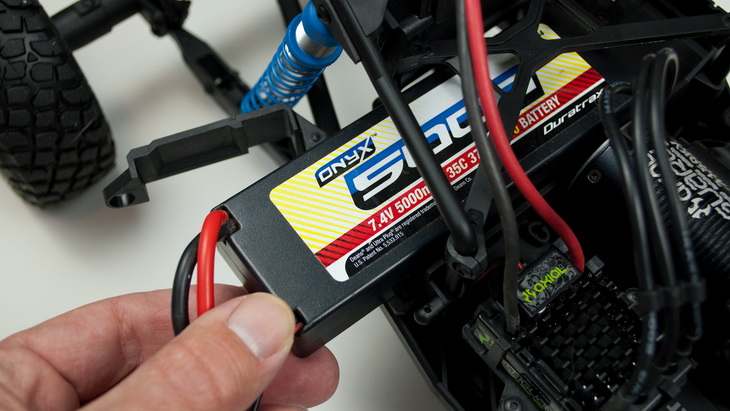
Overview
Charging Lipo batteries at the same time is now easier than before. It is an effective and fast way to use parallel charging instead of a serial charging which is time consuming. As long as you have followed the instructions, and have collected the parallel charging board/adapter, the charger, the connectors and the batteries, you can proceed but with caution.
Those with electrical backgrounds will find this hands-on approach a marvel to undertake. But the under-privilege of not having that knowledge should not hinder you from mastering these tasks.
If you think of the financial implications, it is relatively inexpensive to purchase the required components. You’d better save time by performing parallel Lipo battery charging than wasting time charging the whole day. Let’s discuss the advantages and disadvantages below:
Advantages of Parallel Charging
- Time saving: can charge multiple Lipo batteries at a time rather than charging them individually the process that can take you the whole day
- Efficient and effective: When charging multiple batteries at once, the voltage gets reduced, so that’s an advantage to your charger to quickly charge the batteries compared to charging individual batteries.
- Safe: it is safer than serial charging because the batteries can be connected in a random order.
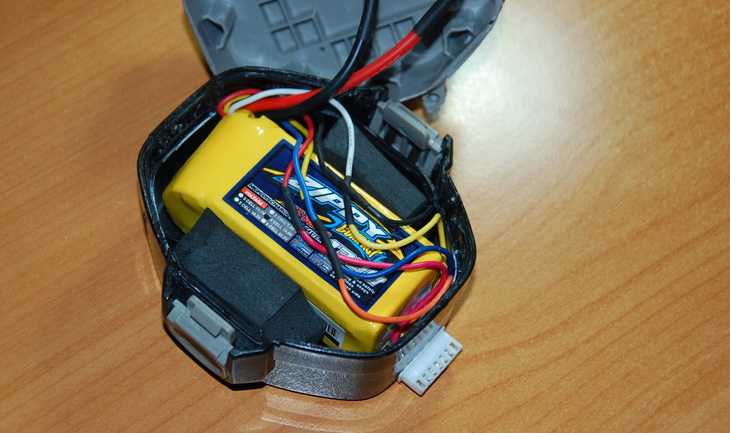
Disadvantages of Parallel Charging
- Collective damage: if anything goes wrong, all batteries will be affected
- Collective indicators: you cannot monitor the progress of an individual battery, but all of them.
- Dangers of voltage difference: connecting the batteries will huge difference in voltage could be catastrophic. A tremendous current flow in response to that can be destructive to the para-board and subsequently to the Lipo batteries.
Don’t forget to stay safe and always ensure that you the best first aid kits, in case of accidents or sickness.
Wrapping it up
Having read through this review, we’re confident that you have acquired sufficient knowledge to undertake parallel charging in order to get exposure to its wonders. We have discussed how it works, the dangers, the benefits and the tips on how to accomplish this task. What’s left for you is to find the required components of high quality to get started. One last final warning, please perform this task vigilantly. We don’t want to exaggerate the impending dangers thereof.
Now flying drones with speedily powered Lipo batteries will be exciting. No more pausing your flight adventures because of the ridiculous long times of charging many batteries individually.
If you want power on the go, then check out our article on the best portable batteries – it’s a must-read!
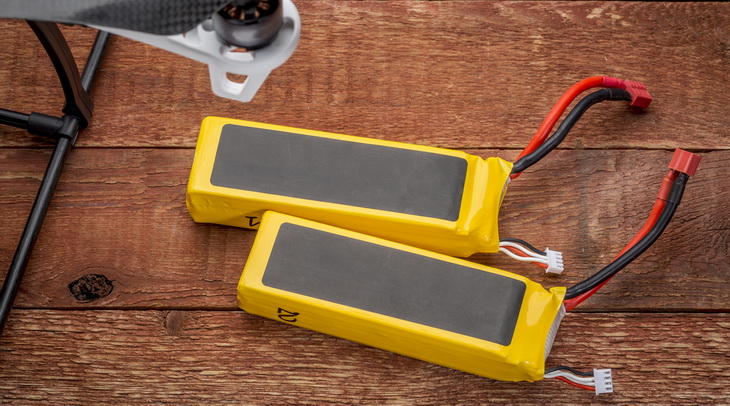
Have you ever been exposed to this form of charging? Please let us know how did you experience, and if there are any additional tips, do share with our readers below. If you have any questions, please shoot, we will be glad to respond accordingly.

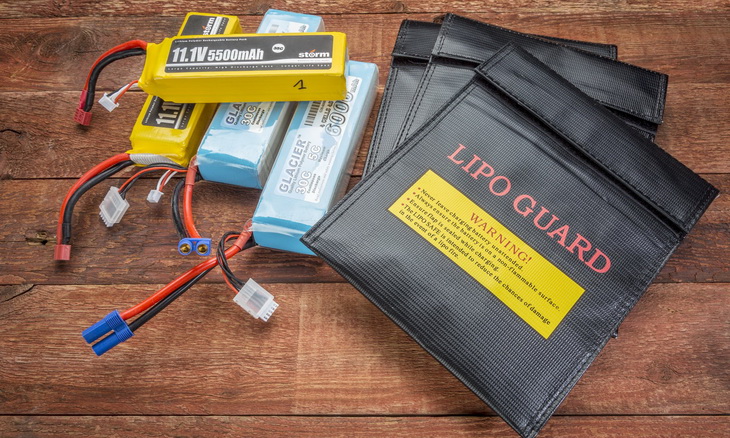






One of the basic guideline that you must follow is charging lipo batteries within the right temperatures to avoid leakage, heat generation and cell damage.
Knowledge is always an important tool, and this article has much to teach you. Make sure you bookmark the page for future reference.